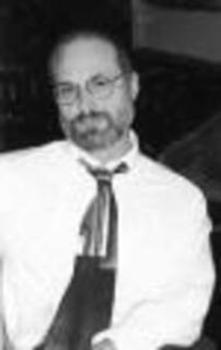Communication access realtime translation (cart) is provided in order to facilitate communication accessibility and may not be totally verbatim. The consumer should check with the moderator for any clarifications of the material.
This text-based course is a written transcript of live event, “Intolerance for Eating and Oral Care Secondary to Sensory Defensiveness” presented by George Fluharty on October 27, 2011.
>> Amy Hansen: I would like to welcome all of you to today's expert seminar, “Intolerance for Eating and Oral Care Secondary to Sensory Defensiveness.” presented by George Fluharty. We're very pleased to have him joining us again today. George Fluharty is an SLP with more than 30 years of experience treating neurogenic communication disorders. His work has been published in rehabilitation and advance for SLPs in 2003 he received the clinical service award from the Brain Injury Association of Wisconsin for outstanding clinical service. Welcome, George, and thank you so much for sharing your expertise with us today.
[Applause]
>> George Fluharty: Thank you, Amy. I will describe sensory disorders that can affect eating and oral care, such as brushing one's teeth. I will describe hyperesthesia, a concept often associated with neurology, as well as sensory defensiveness, a disorder first described by occupational therapists. I will, of course, describe characteristics of feeding aversion, oral facial hypersensitivity, and tonic bite reflex, all problems typically addressed by speech-language pathologists.
A Comment by John Locke
“So difficult it is to show the various meanings and imperfections of words when we have nothing else but words to do it with.” - John Locke
Hyperesthesia, sensory defensiveness and feeding aversion might be included in the list of imperfect words to which Locke refers. I will try to show how terms used in different disciplines, such as speech-language pathology, audiology, occupational therapy and neurology, may be related.
ASHA Clinical Practice Example: Number 5
Collaborating with other professionals (e.g., identifying neonates and infants at risk for hearing loss, participating in palliative care teams, planning lessons with educators, serving on student assistance teams)
Understanding hyperesthesia and sensory defensiveness may help SLPs collaborate with other professionals, including OTs, PTs, neurologists and neuropsychologists. This may relate to Clinical Practice Example Number 5, a poster entitled “Hyperesthesia and Integrated Review.” I wrote this with Dr. Thomas Fisher and Dr. Nathan Glassman for the 2009 ASHA convention and it is available online. It compares the literature describing sensory defensiveness and hyperesthesia, as well as hyperacusis and photophobia. The poster also references the work of Donald Swanson, an authority in the field of information sciences, who describes the concept of noninteractive fields of literature. Noninteractive fields of literature are bodies of work describing similar phenomenon that go unnoticed by scientists in related fields. Swanson states that there may be undiscovered, implicit links between noninteractive fields of study. It is possible that hyperesthesia, sensory defensiveness and feeding aversion are noninteractive fields of study, with a shared link between them. As my colleagues and I suggested in the poster, that link might be habituation. I will discuss habituation later in this presentation.
ASHA Clinical Practice Example: Number 16
Addressing behaviors (e.g., perseverative or disruptive actions) and environments (e.g., classroom seating, positioning for swallowing safety or attention, communication opportunities) that affect communication and swallowing
Hyperesthesia and sensory defensiveness may result in behavior that affects swallowing and communication. It may be necessary to modify the environment to help people with hyperesthesia and sensory defensiveness tolerate eating. I will describe techniques for addressing these issues.

